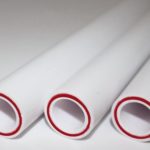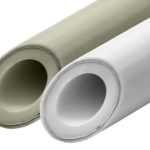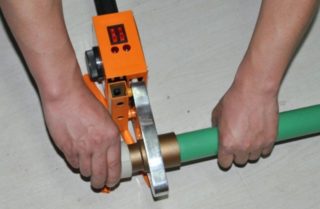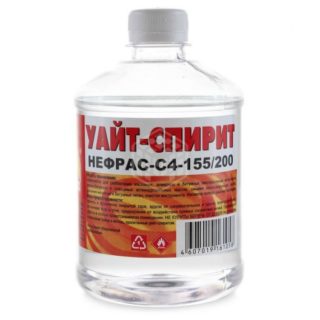The heating of private houses and city apartments has always been given increased attention, since the health and well-being of people living in them depends on room temperature. When preparing the part of the project regarding the characteristics and material of heating pipes, the possibility of choosing the optimal solution that meets the requirements of the standards is taken into account. Polypropylene pipes for heating are one of the options for arranging pipe wiring, which in modern conditions is preferred by many users.
Pros and cons of polypropylene pipes
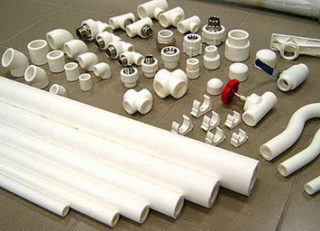
Household systems, which include pipes for heating from polypropylene (PP), have a number of advantages:
- reliability of the connection formed during installation;
- the application of the thermal welding method allows you to make a continuous monolithic joint that does not differ in structure from the product material;
- for welding use a standard welding machine (soldering iron), anyone can learn how to work with it;
- the entire welding procedure takes several minutes;
- the material is highly resistant to carrier freezing.
The advantages include low cost and resistance to corrosion. PP differ in ease and simplicity of installation.
Polypropylene for heating has several disadvantages, which are manifested in the following:
- the linear expansion index is 2.5 mm per unit length (linear meter);
- pipe installation is allowed to be carried out only in an open way, in order to be able to control the condition of the joints;
- soldering of propylene pipes (PPT), despite its apparent simplicity, is a very important operation, leading to marriage at the slightest deviation from the technology.
When choosing this material, it is important to take into account all the features of its application and plan the next steps correctly.
Varieties of PPT
The first for heating began to use PPT, reinforced with special aluminum foil, which caused a rise in the cost of the finished product. Over time, pipes appeared reinforced with fiberglass, gradually displacing analogues with aluminum.
Aluminum reinforcement
Aluminum foil in tubular products is used as a compensator for expansion during heating, and also acts as a diffusion barrier. Usually it is placed closer to the surface, but in some models the protective layer is arranged in the depths of the walls. Before proceeding to the formation of the joint in the joint area, it is necessary to clean the tube stock well.
In products where aluminum foil is located closer to the middle of the wall, after trimming it becomes so thin that the connection is of poor quality. Therefore, when choosing PPR pipes for heating a house equipped with aluminum foil, it is preferable to have a sample with a reinforcing layer closer to the front surface.
Fiberglass reinforcement
When using polypropylene tube blanks reinforced with fiberglass, it is important to consider some nuances. Glass fiber, as a rather unstable material, has the property of breaking under load. Sometimes it is enough to drop the workpiece onto the concrete floor to irreversibly damage its protective layer.
It is not recommended to use such pipes in places where the temperature drops to very low values. Under such conditions, the fiber becomes brittle and breaks easily with minor deformations.
Fiberglass is a good option, but its use should be very careful both during soldering and when laying the material.
- Fiberglass reinforcement
- Aluminum reinforcement
Criteria for choosing pipes for heating
Before equipping the heating in a private house with polypropylene do-it-yourselfers, you should understand the rules and criteria for choosing suitable pipeline elements for this. When selecting the right sample, the following factors are taken into account:
- pipe size (its diameter);
- heating boiler power and fuel class used;
- volumes of heated rooms (their exact dimensions).
It is also important to determine which heating system is used and how the circuits are laid: open or closed. For each of these options, a specific type of pipe is selected. Closed execution is most often found when installing a floor heating system on a screed. At the same time, regular heating pipes are often safely hidden in the wall so as not to disturb the appearance of the rooms. When choosing pipeline elements, the type of coolant circulation is also taken into account. The differences are expressed in their ability to withstand additional pressure in the presence of a pump. With the natural movement of the carrier on the wall thickness of the tubular products less attention is paid.
Do-it-yourself PPT heating
To equip the heating in private homes with polypropylene pipes with your own hands, you will first need to prepare supplies and tools, including a soldering iron and connecting fittings. In order to get a reliable system in operation, before its installation it is required to fulfill a number of conditions:
- the main attention during the work is paid to laying the heat circuit;
- previously prepared fittings and a set of tees should be selected in size;
- the welding machine must have a nozzle corresponding to the diameter of the working pipes and fittings.
Before starting the fusion of the base contour, it is recommended to practice on unnecessary workpieces.
In a one-story private house, it is recommended to install heating on the basis of polypropylene pipes yourself in the following sequence:
- A pipeline layout or drawing is being prepared.
- The meter is calculated for one-pipe or two-pipe wiring, and then fittings of the required size are selected.
- Pipes selected in accordance with the parameters and scheme are cut using special scissors.
- The soldering iron is placed on a horizontal plane, after which its working head is heated to 260 degrees.
The working parts of the fitting and pipes are degreased using white spirit, and then put on the heating element of the soldering iron, followed by reflowing the tips. After some exposure, the parts are removed from the heater head, two articulated elements are inserted one into the other. After about 10-15 seconds, the weld site turns into a continuous and completely sealed monolith.
The heating time of pipe billets and fittings depends on their thickness, as well as on the presence or absence of a metal and fiberglass protective coating and a number of other factors. All the necessary data on the order of soldering products from PP are given in the instructions for use of the soldering apparatus. Here you can find the heating time of products. To do this, you need to pay attention to the branding. In order for the resulting joint to turn out to be of high quality, you need to familiarize yourself with the technical specifications.
Wiring diagram
Before you start arranging a heating system from polypropylene in the house with your own hands, you will need to decide on the wiring diagram, which can be single-circuit or double-circuit. Since in a private building there are no conditions for the natural movement of the carrier, it is necessary to include a charge pump in the system. In this case, it will be necessary to choose the appropriate type of PP pipes capable of withstanding the increased pressure in the bypass circuit with forced circulation.
In the diagram, it is necessary to indicate the position of the individual elements of the heating control equipment.
It will be possible to obtain an effective and reliable system based on polypropylene pipes only if all the requirements and rules for installation and operation are observed.
